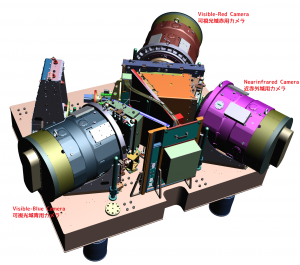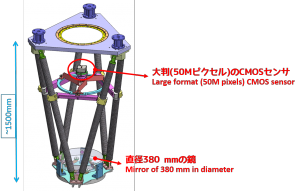Dr. Khee-Gan Lee (Associate Professor, Kavi IPMU)
It was a moment of anticipation and nervous energy, pent up from 16 years of discussions, preparations, planning, and hard work from all involved. But soon after midnight on March 27th, the Prime Focus Spectrograph (PFS) — the most complex instrument ever built for the Subaru Telescope — was pointed at an unremarkable region near the Celestial Equator, and the 2,394 robotic positioners on PFS began their synchronized dance to align themselves with distant galaxies. Within several minutes, all were in position, and we began exposing the 12 detectors on PFS to obtain spectra, thus officially starting the Subaru Strategic Program (SSP) for this instrument. This ambitious survey, comprising 360 nights of observing over the next five years, aims to elucidate the dark sector of the Universe by observing millions of galaxy and star spectra.
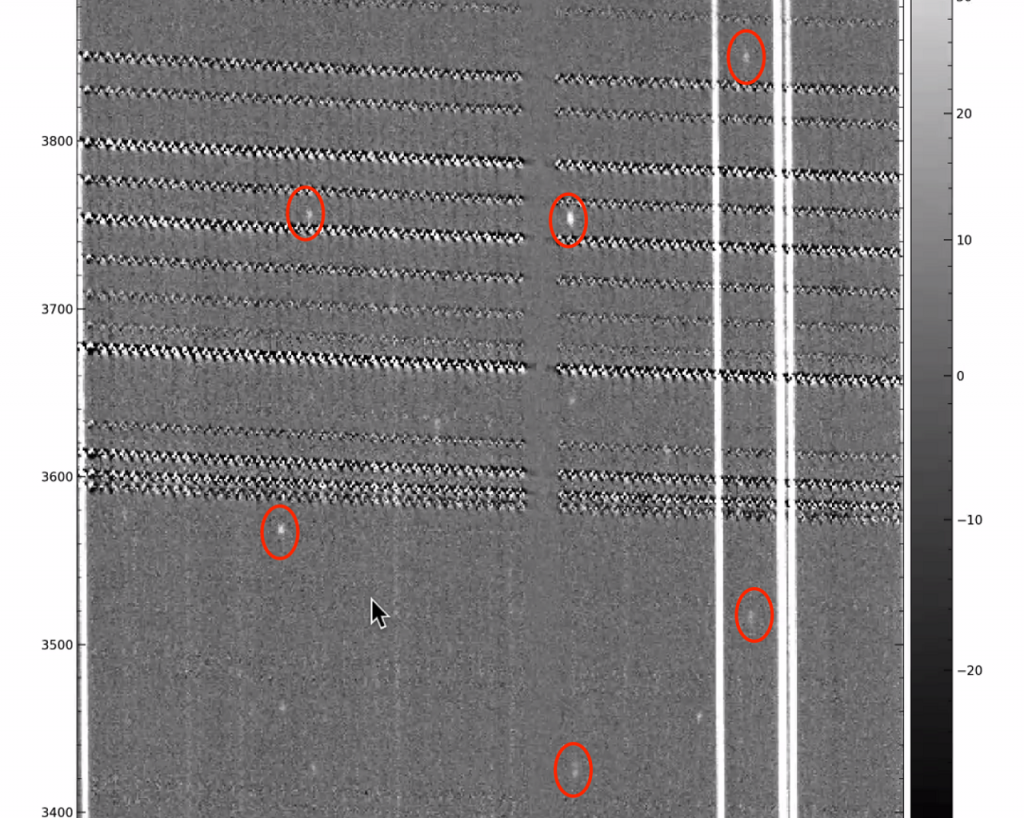
The individual fibers are laid out from left to right, with the each spectrum going from top to bottom in the view (several bright star spectra are seen on the right). The patterns of emission lines that go from left to right across all fibers are from our atmosphere, but the tell-tale smudge of emission lines from distant galaxies (circled) are also visible.
With 100% atmospheric transparency and astronomical seeing as low as half an arcsecond, these were the kind of conditions on Maunakea that astronomers love to brag about. As the night progressed, we slid into the rhythm of slewing the telescope to new fields, reconfiguring the fibers to the new targets using the robotic positioners, and starting our science exposures. This smooth operation was thanks to the hard work of the instrument team and support astronomers, as well as the SSP members who had been busy preparing for the observations over the past two months. As the detector data were read out from the instrument, we excitedly saw the telltale peaks of nebular emission lines in the raw two-dimensional data. Due to the large data volume and the complex nature of fiber spectra, more hard work will be required from the reduction and analysis teams before they can reveal exciting new insights into the fundamental workings of our Universe — but it was gratifying to see the data start streaming in smoothly.
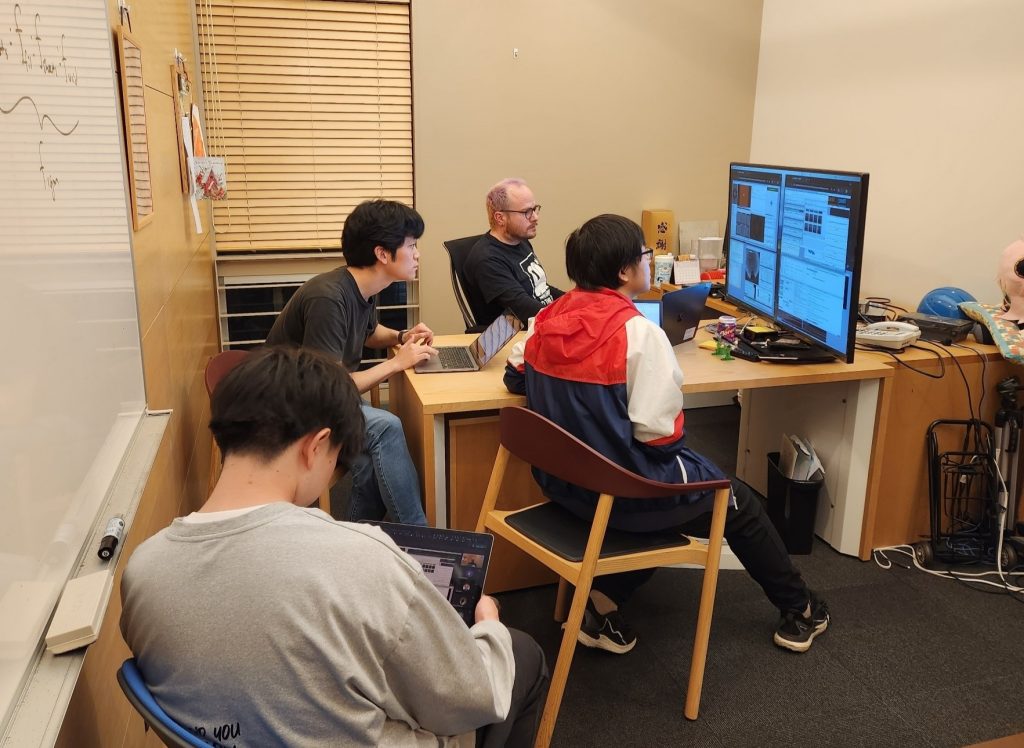
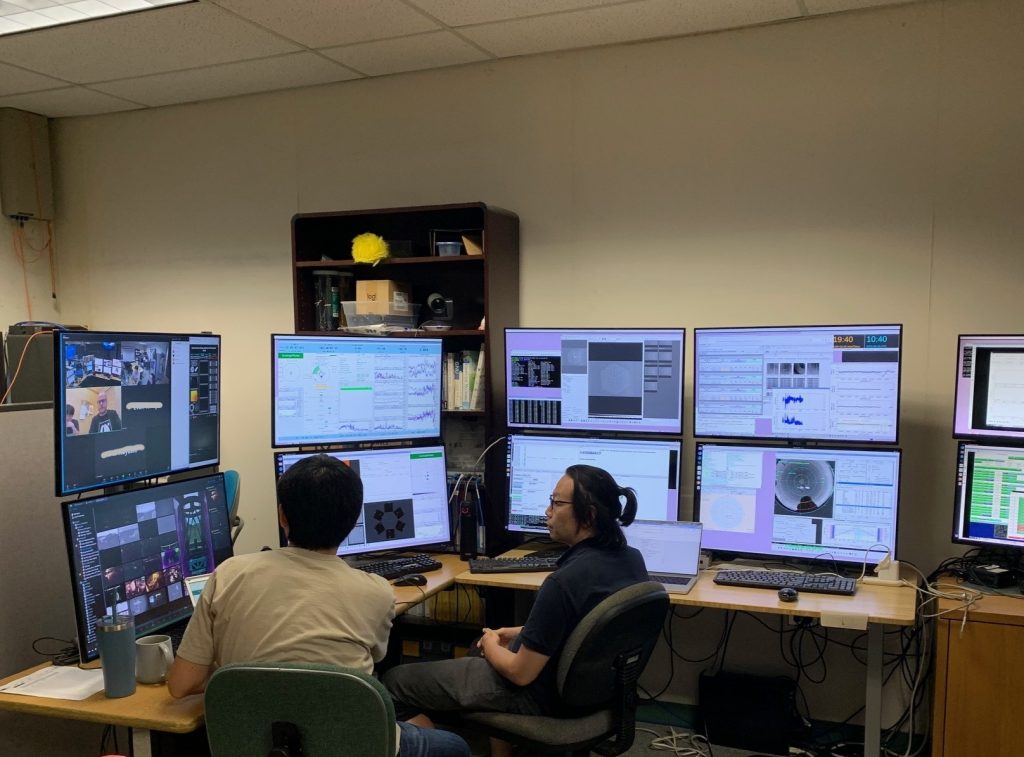
Left: SSP observers joining the night at Kavli IPMU. Right: Support astronomers operating the PFS instrument in Hilo
By the end of this observing run, we had completed just under 1% of the observing time allocated to the SSP. We look forward to much more beautiful data and groundbreaking science from PFS!

